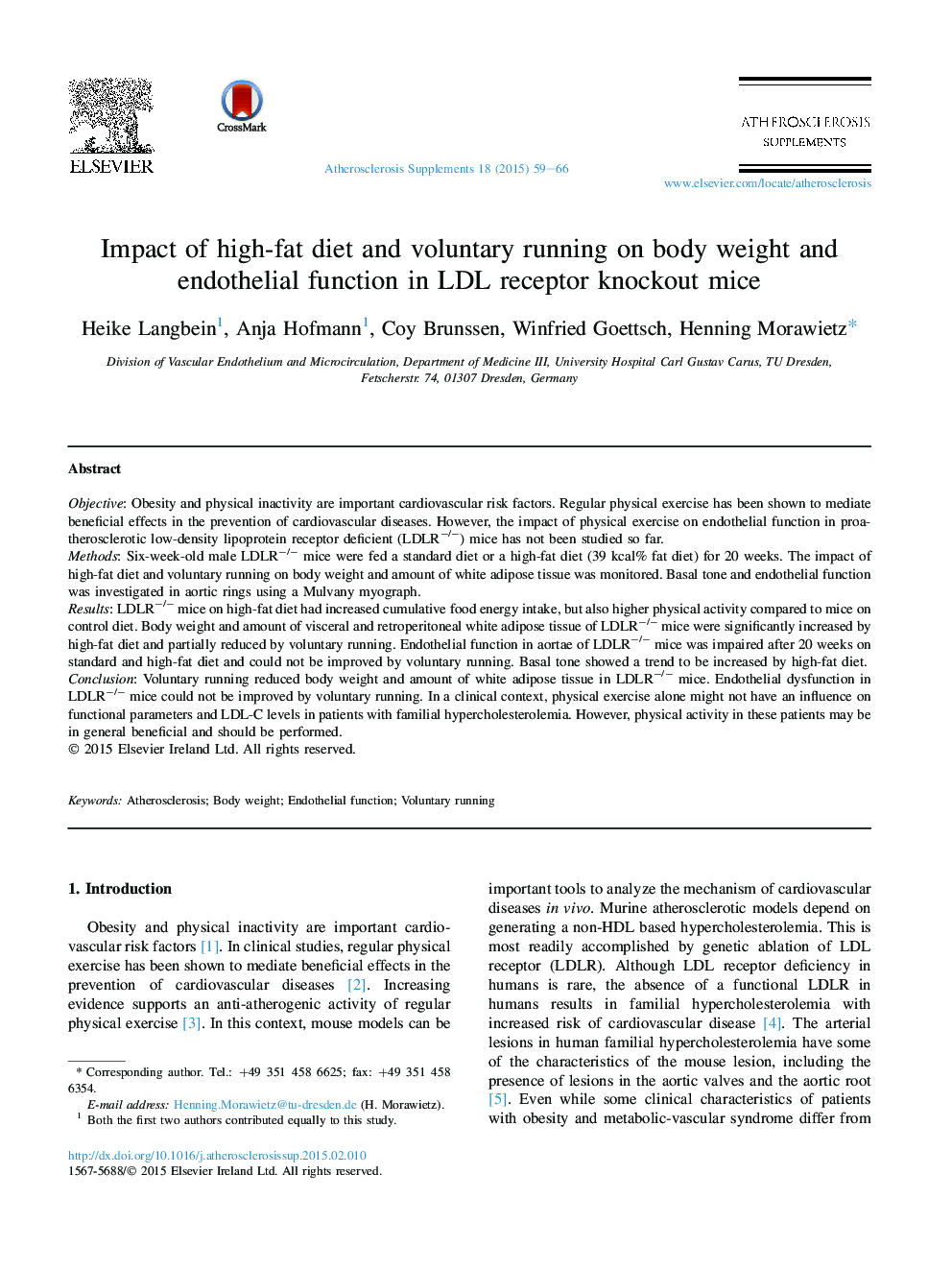| Article ID | Journal | Published Year | Pages | File Type |
|---|---|---|---|---|
| 2895452 | Atherosclerosis Supplements | 2015 | 8 Pages |
ObjectiveObesity and physical inactivity are important cardiovascular risk factors. Regular physical exercise has been shown to mediate beneficial effects in the prevention of cardiovascular diseases. However, the impact of physical exercise on endothelial function in proatherosclerotic low-density lipoprotein receptor deficient (LDLR−/−) mice has not been studied so far.MethodsSix-week-old male LDLR−/− mice were fed a standard diet or a high-fat diet (39 kcal% fat diet) for 20 weeks. The impact of high-fat diet and voluntary running on body weight and amount of white adipose tissue was monitored. Basal tone and endothelial function was investigated in aortic rings using a Mulvany myograph.ResultsLDLR−/− mice on high-fat diet had increased cumulative food energy intake, but also higher physical activity compared to mice on control diet. Body weight and amount of visceral and retroperitoneal white adipose tissue of LDLR−/− mice were significantly increased by high-fat diet and partially reduced by voluntary running. Endothelial function in aortae of LDLR−/− mice was impaired after 20 weeks on standard and high-fat diet and could not be improved by voluntary running. Basal tone showed a trend to be increased by high-fat diet.ConclusionVoluntary running reduced body weight and amount of white adipose tissue in LDLR−/− mice. Endothelial dysfunction in LDLR−/− mice could not be improved by voluntary running. In a clinical context, physical exercise alone might not have an influence on functional parameters and LDL-C levels in patients with familial hypercholesterolemia. However, physical activity in these patients may be in general beneficial and should be performed.
